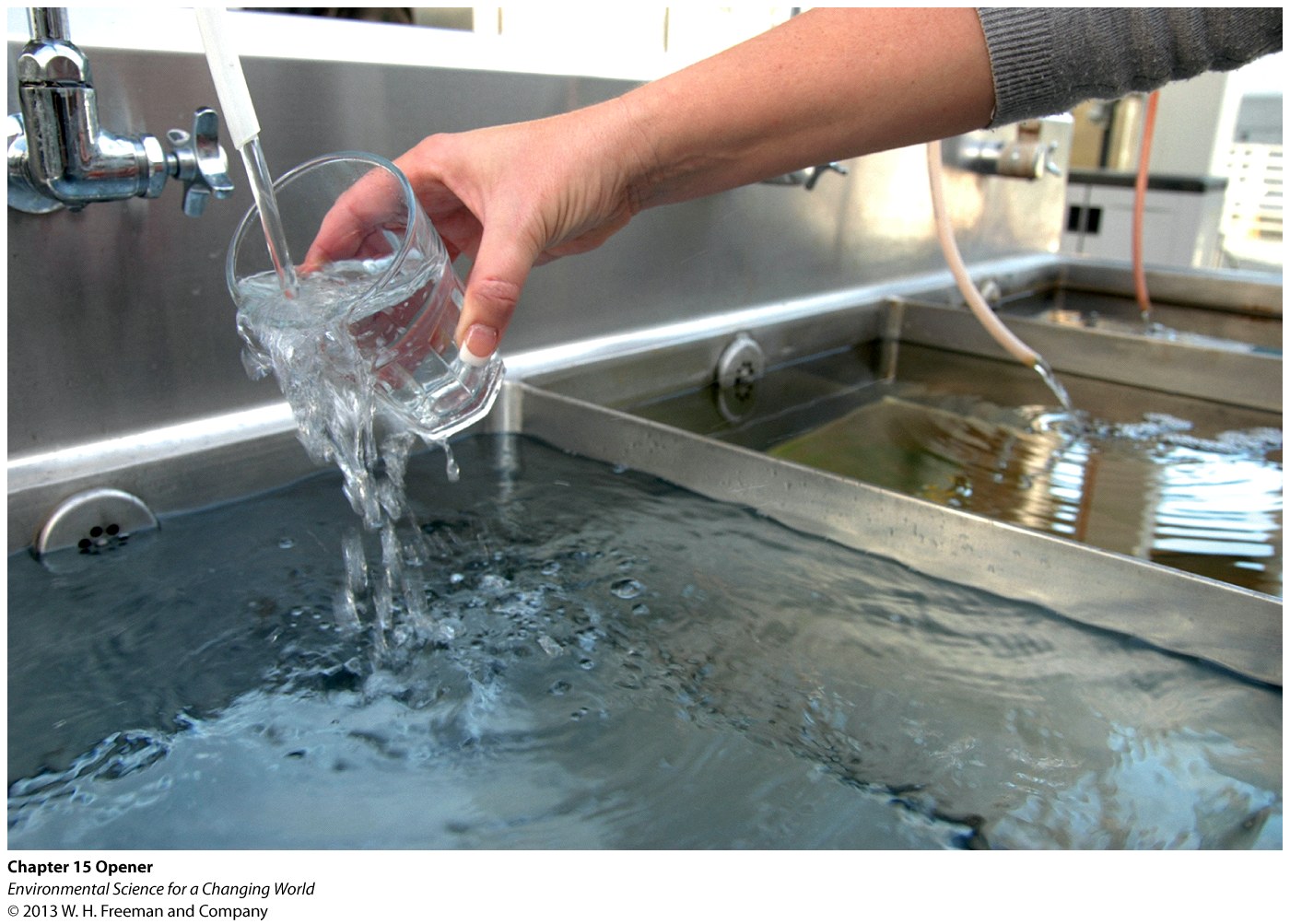
Chapter 15. Chapter 15: Freshwater Resources
What are the causes and consequences of water scarcity?

Guiding Question 15.2
What are the causes and consequences of water scarcity?
Why You Should Care
The water cycle governs where and how much water is cycling over the land. However, wind and weather patterns create areas with plenty of water and other areas with too little water. If you take this pattern and add in that humans use water in different ways (water usage increases with industrialization and ecological footprint), then it is no surprise that water can be scarce in some regions of the world.
Water tends to be scarce in desert regions, but water scarcity is much more common in areas that are poor (economic water scarcity) and areas that have growing populations or are expanding personal consumption (scarcity as “water footprint” increases). As water becomes scarcer, technology that pulls water from deeper groundwater sources will require more energy and expense.
Test Your Vocabulary
Choose the correct term for each of the following definitions:
| Term | Definition |
|---|---|
| Conversion of water from a gaseous state (water vapor) to a liquid state. | |
| Water found underground in a region known as an aquifer. | |
| Rain, snow, sleet, or any form of water falling from the atmosphere. | |
| Not having access to enough clean water supplies. | |
| An underground, permeable region of soil or rock that is saturated with water. | |
| The process of water soaking into the ground. | |
| The uppermost water level of the saturated zone of an aquifer. |
1.
Why do developed countries have higher water footprints?
2.
Why do more areas globally have economic water scarcity rather than limits due to physical access?
3.
Why do rural areas have lower rates of access to improved sanitation globally?
Correctly match each sector in the pie chart with its water usage. Then match each type of food and each product with the number of gallons of water needed to produce them.
4.
Which sector uses the most water?
| A. |
| B. |
| C. |
| D. |
5.
Which diet would use the most water to produce?
| A. |
| B. |
| C. |
| D. |
6.
Why is water usage tied to consumption in developed countries?
Activity results are being submitted...